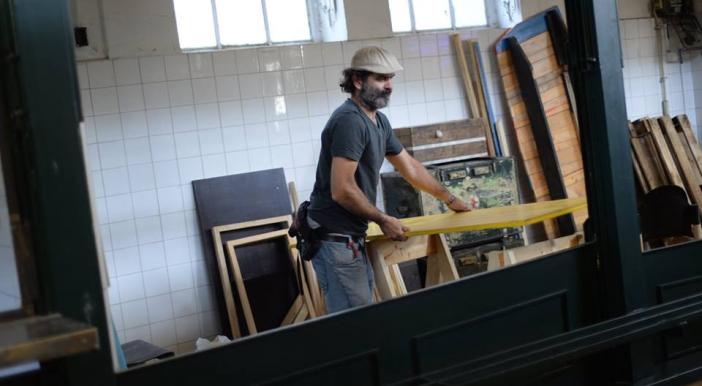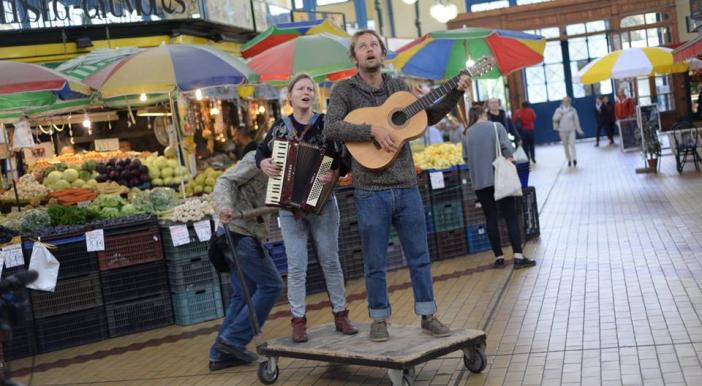We wanted to bring together people around the neighbourhood for one more time to enjoy a nice breakfast with live music, join our sustainability workshops with Verkstaden and Durca, and come with us for a historic walk around the area.
Rakoczisquaring 2017
Four days of workshops, conference and happenings about the Rakoczi square, on the Rakoczi square, with people from the Rakoczi square. In mid-September for four days we moved in the Rakoczi Market Hall to fulfil our plans. Plans, which have always looked nice in textbooks, we talked about them a lot, but have never really translated them into concrete actions. Now we made an attempt.
There is a square in the heart of Budapest. In the 8th district, past the grand boulevard, in the shadow of the 4th metro line. There is a hundred-year old market hall on the square, victim of urbanistic developments recently. The construction of the 4th metro line started in 2006. Due to the prolonged works, the neighbourhood lost plenty of its liveability, the market hall became abandoned and square was only used for bypassing. Finally the construction ended and it turned out that the exit of the metro fully covers the view of the market hall so it became almost invisible from the boulevard.
These grassroots initiatives have created an excellent vibe on the Rakoczi square. The changes due to gentrification are independent from each other so far, but together they result in an exciting cultural buzz. Mindspace put the focus on these initiatives and the questions they raise. How can small interventions help the community? How can communities be drawn in the discussions to exchange ideas and find solutions to the problems. How can we connect the already existing, but so far not-cooperating cultural and gastronomical spaces. Can the market vendor and the operator of a pop-up printshop find the common grund, so they can come up with something together?
The smart city concept has several branches and we were concentrating on smart people and smart living. Mindspace assessed the local needs, interviewed the market vendors, farmers and the managmenet of the market. Based on these conversations we organised workshops tailored to the identified, or not yet identified local needs. During the four days that we have spent in the markethall we created pop up spaces in the empty shops for graphics and cloth designers, or carpenters. They transferred their knowledge and have produces unique and useful creations inspired by the market hall, such as postcards, a local map, aprons for butchers, shopping bags, t-shirts, wooden benches, or standings for the fruit stalls. Hence we successfully brought outside activities inside the market and created interesting interrelations.
Mindspace was also present with a pop-up office and we were there to answer questions from passers-by. During the day we gave professional support for the event and used smart city methodologies to engage with locals. At a conference speakers from the SCCM network introduced national and international examples of community-driven urban development projects. The event was complemented with musical performances based on the concept of David Somlo. Several musicians gave live concerts during the days and closed the event on the last evening with a large-scale evening performance.
The goal of the project was to raise awareness to an underused public space and re-introduce it to locals. Hence we believe that the main outcome of the project is the start of a continuous conversation with them. Thanks to this process people have started to understand that they have a word in urban development, that the city is not a stranger thing, beyond their reach, and that they can form the patterns of urban tapestry. We all learned that smart actions make the surrunding built environment more liveable and exciting.
It has become clear that everyone – vendors, pensioners, young people - has its opinion about the square, about what works, what is disfunctional andd how to make it better. We will spend the automn with analysing and structuring this information and on this basis we will develop a long-term project with the involvement of shopowners on the market, public and cultural institutions, economic actors and eager locals.
from the author
We kicked off the new season by reimagining BRFK Gallery. The new place, called Rákócity became an urban lab with exhibitions and project focusing on the neighbourhood. The first event was Rákóczi Rekreáció, a "recreational center". We filled up the place with donated plants, heaters, nice smells and some hot tea.




